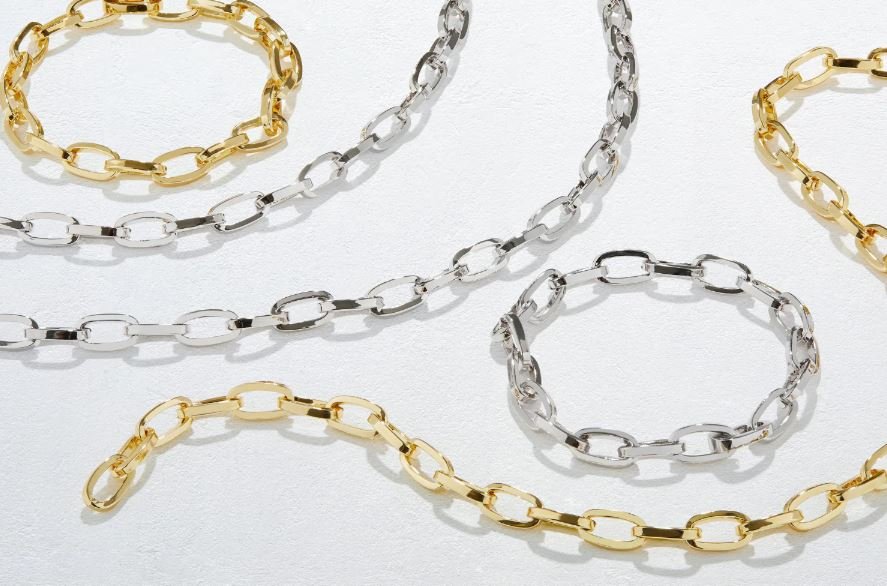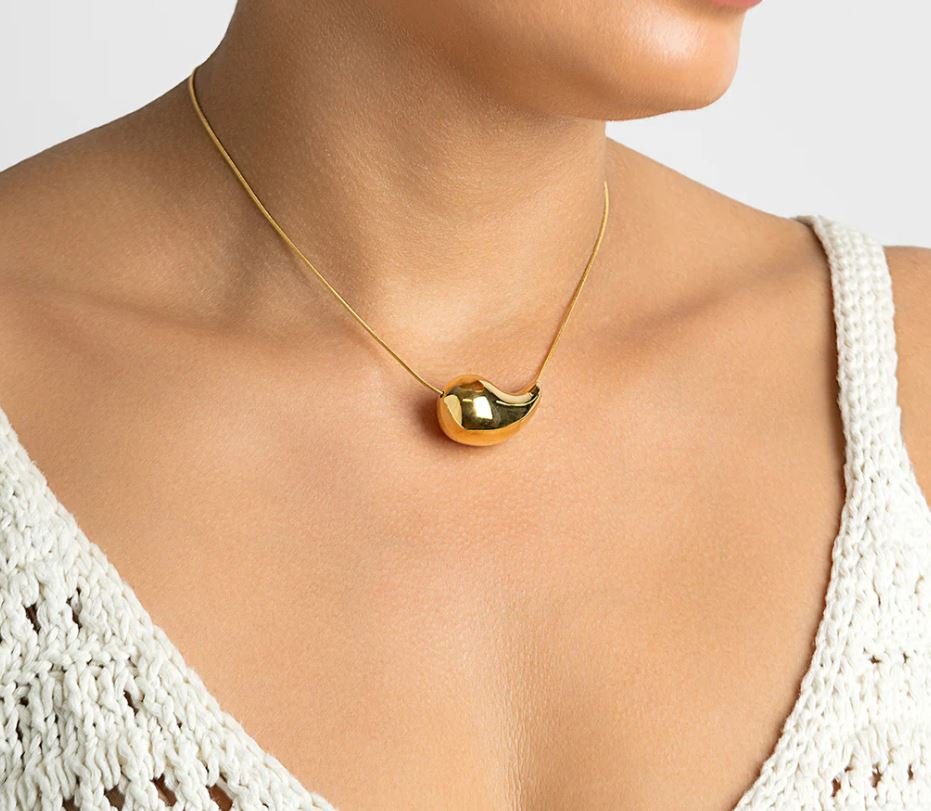Does 14K Gold Tarnish
14k gold does tarnish with time. It will take around 2 to 3 years to develop significant tarnishing. The speed of tarnishing will depend on how well you care for it. Once it is tarnished, you will have to either take it to the jeweler for cleaning or use tarnish removing chemicals by yourself.
What Happens when Gold does Tarnish?
Tarnish make gold appear somewhat green. At start, it might not be noticeable. But as time passes, tarnish becomes more and more prominent until it develops a dull green layer over gold’s surface. If left unaddressed, it can impact gold’s overall shine and make it appear ugly.
This can be a big problem if gold jewelry is sentimental. As emotions and memories are connected to the pieces of jewelry, they are more than just metal. In such a time, its important to know what to do to restore the shine of the jewelry.
Can Tarnished Gold Turn Skin Green?
Yes, it can turn skin green specifically if you use a lot of cosmetic items. Tarnished 14k gold can react with skin oils, lotions or perfumes and turn skin green. This green color is temporary and can be removed by simply washing with a soap.
Does 14k Gold Plated Tarnish?
Yes, 14k gold plated can also tarnish. However, generally this plating is so thin that it wears off even before tarnishing starts. So, if you are using 14k gold plated jewelry, you must know that it is not going to last for long.
Are There Any Gold Types that Do Not Tarnish?
No. Every gold type tarnishes. The speed at which a gold alloy tarnishes can be different. Higher purity gold alloys like 18k gold tarnish at a lower speed. Contrary, gold alloys with lower purity like 10k will tarnish at a faster speed. This is due to 10k having higher copper content than 18k.

Can you Stop Tarnishing of 14k Gold?
No. You cannot actually stop the tarnishing of 14k gold as it is a natural process. However, there are many ways which you use to slow down this process. These steps are mentioned below.
What to Do When Your 14k Gold Does Tarnish?
Whenever your gold does tarnish, you have to remove tarnishing. There are two ways to do it:
- Take jewelry to the jeweler for cleaning.
- Remove tarnishing by yourself using tarnish removing chemicals.
Removing tarnishing is easy and you can do it in 5 minutes.
How To Remove Tarnishing?
Before starting, make sure you have a soft fabric cloth, tarnished jewelry, warm bowl of water and tarnish removing chemical. Make sure that water is not hot or it will damage your jewelry.
- Dip your jewelry in bowl of warm water.
- Place it their for 5 minutes.
- After that, apply tarnish removing chemical and start rubbing gently with a soft toothbrush.
- Once all of the tarnish is cleaned, rinse it with clean water and dry immediately with a soft cloth.
How to Keep 14k Gold Away From Tarnishing?
There are many ways by which you can save 14k gold from tarnishing.
1. Avoid Water Contact
Water is an enemy of every kind of jewelry. It can speed up tarnishing and corrosion. Though, 14k gold does not corrode, it can be damaged by water. Its better to not allow water to come in contact with gold. Avoid tasks which involve water when you are wearing gold. These can be swimming, laundering, washing dishes etc.
2. Use Wax or Water Repellent
Wax or water repellents can be used to cover gold in a way that water or any atmospheric chemicals can’t react with it. These chemicals can form a layer around gold and protect it from external damage causing agents. This method is temporary and you will have to do it from time to time for proper cover.

3. Proper Storage
Proper storage is another point which people often forget. Gold can get scratched or even tarnished at a faster speed it not stored properly. Buy a dedicated jewelry storage box for storing all of your valuable jewelry. It must have storage separate compartments for each jewelry item. This will protect all items from friction.
4. No Home made Chemicals for Cleaning
No homemade chemicals should ever be used for cleaning jewelry. These chemicals can damage jewelry rather than cleaning. Gold is precious. It does not need any experiments. Only use commercially available chemicals of reputed companies.
5. Visit your Jeweler At least Occasionally
Visit your jeweler regularly for jewelry check-ups. Jewelers can identity any problem which can happen with your jewelry. For example, a jeweler can identity a loose diamond in your ring. So, it will be better to pay your jeweler a small price rather than losing it. A jeweler can also identify any tarnishing jewelry and can provide real suggestions.
Who Should Buy 14k Gold?
If you are going to buy a gold jewelry, first preference will always be 18k due to its quality and purity. But it can be expensive. So, if your budget it less, 14k gold is a good option. It does not mean that it is a low quality gold alloy. All it means is that it is not as high quality as 18k.
14k gold is good for someone who wants to get gold looks but at a low budget. It is not as expensive as 18k or other premium white metals.
Alternatives of 14k Gold
Here are some alternatives of 14k gold that will not tarnish.
18k Gold
18k gold is a higher purity alloy of gold. It has better resistance against tarnishing and other problems. Though, it might get scratched easily than 14k gold, but surely withstands water damage. It also shines more than 14k as it has more gold content.
Gold Filled
Gold filled is a type of gold jewelry in which gold is coated over a base metal like sterling silver. This thing is different from gold plating or gold filled as gold content is at least 5 percent of the total weight. It can withstand tarnishing than gold plating or gold vermeil. But as compared to 14k gold, it is a low quality but affordable alternative.
Titanium
Titanium is one of the most bio-compatible metal used in jewelry. It never tarnishes or corrodes. It is also highly hypoallergenic metal meaning it will never react with the skin. That’s why mostly first piercers go with titanium. Titanium might not be as shiny as gold, but offers a lot of colors and designs which gold and other premium metals cannot offer.
Platinum
Platinum is a premium category white metal known for its price tag. Its white appearance can be compared with other premium metals like rhodium. It never tarnishes or corrodes and is highly hypoallergenic as well.
Common FAQ’s about 14k Gold Plated Jewelry
Here are some of the common questions about 14k gold plated jewelry.
Does all 14k Gold types tarnish?
Yes. 14k gold, regardless of its color i.e. yellow gold, white gold or rose gold, it will tarnish.
Does Gold Plated Sterling Silver Tarnish?
Gold plated sterling silver will not tarnish until top gold layer wears off. As told earlier, gold does take time to tarnish but this gold plating is so thin that it wears off before that. Once it wears off, sterling silver will tarnish.
Does Tarnish Damage Gold?
No, tarnish does not damage gold. All it does is create a layer over gold’s surface which makes it look ugly. Once you remove it, your gold jewelry is just like a new one.
Conclusion
14k gold does tarnish but might take 2 to 3 years to develop full tarnishing. There are a number of factors that can contribute to faster speed of tarnishing. Some of those factors are sweat, cosmetic items, water and poor storage. Its important to take care of your jewelry to maintain its shine and glamor. Otherwise it can lose its beauty. That’s why before buying a piece of jewelry, a buyer must be aware of all the properties of what they are buying and its alternatives being available in the market.

